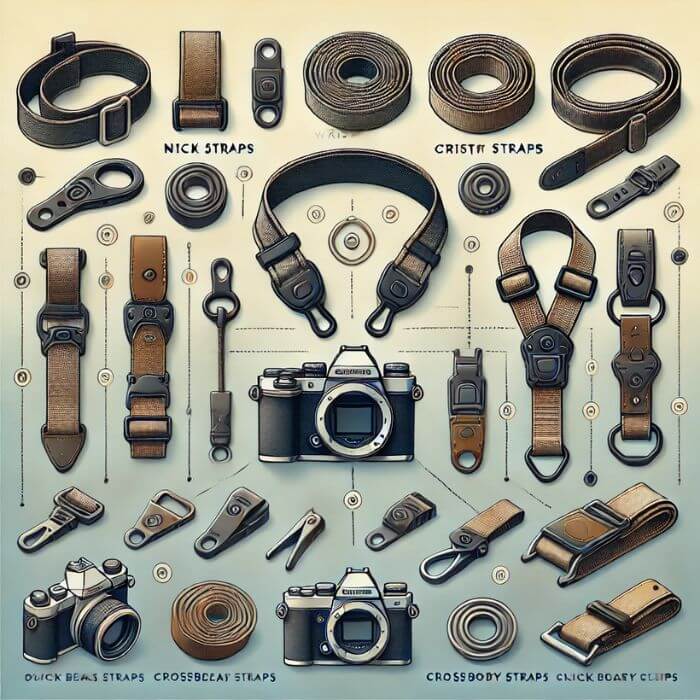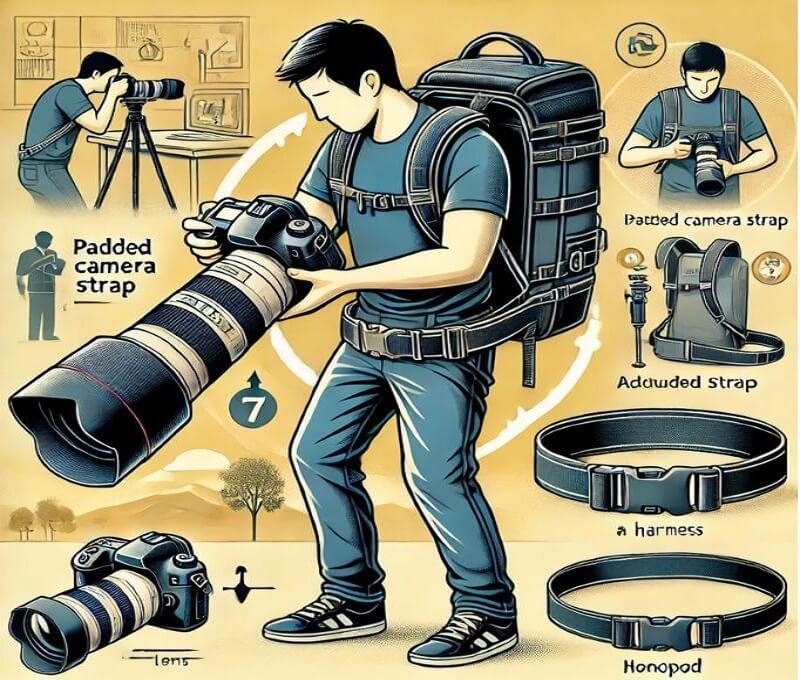When you’re equipped with a heavy lens, the joy of photography can quickly turn into a physical challenge. Learning how to carry a digital camera with a heavy lens is essential for managing a hefty lens like the Tamron 150mm-600mm or a Canon 70-200mm f/2.8L. It requires not just strength but also smart strategies to ensure comfort, safety, and ease of access. Here’s a detailed guide on how to manage your gear effectively:
1. Use a Backpack or Shoulder Bag
- Backpack: A camera backpack is an excellent choice for carrying heavy lenses. It distributes the weight evenly across your back, reducing strain on your neck and shoulders. Brands like Kata (now Manfrotto) offer durable options that can accommodate your camera with the lens attached, along with other gear1.
- Shoulder Bag: If you’re looking for something lighter, consider a shoulder bag. These are less bulky than backpacks and can be more convenient for quick access. However, ensure the bag has sufficient padding to protect your equipment.
2. Harness Systems
- Cotton Carrier: This harness system allows you to carry your camera with the lens attached in front of your chest, providing easy access and balancing the weight with a backpack. It’s particularly useful for long lenses as it secures the setup, preventing it from swinging around.
- OpTech Dual Harness: Another option is the OpTech dual harness, which spreads the weight over both shoulders, reducing the load on any single point of your body1.
3. Monopod or Tripod Techniques
- Monopod: Using a monopod can significantly ease the burden of carrying a heavy lens. You can attach the lens to the monopod, rest it on your shoulder, and walk with it, using the monopod as a support. This method not only helps in carrying but also in shooting stability.
- Tripod: If you’re using a tripod, consider the technique of extending one leg longer than the others for easier mobility. This allows you to lift the setup by the shorter legs, rest it on your shoulder, and move to your next shooting location.
4. Camera Straps and Attachment Points

- Strap Attachment: Instead of attaching the strap to the camera body, which can strain the lens mount, attach it to the lens’s tripod mount. This distributes the weight more evenly and reduces the risk of damaging your camera.
- Longer, Wider Straps: Using a longer and wider strap can distribute the weight better across your shoulder. Brands like Lucky Camera Straps offer straps designed for comfort with heavy gear6.
5. Handholding Techniques
- Support with Body: When handholding, use your body for support. Tuck your elbow into your side, creating a stable platform for the lens. This technique not only helps with carrying but also with shooting stability.
- Hand Straps: A hand strap can take some of the weight off your neck, allowing you to support the camera with your hand, reducing the load on your neck2.
6. Minimize Gear
- Lightweight Alternatives: If possible, opt for lighter lenses or camera bodies. For instance, using a crop sensor camera or lenses with smaller maximum apertures can significantly reduce weight.
- Accessories: Keep accessories to a minimum. If you rarely use certain items, consider leaving them behind or finding lighter alternatives like LED lights instead of heavy flashes
7. Safety and Comfort
- Check Your Straps: Always ensure your straps are in good condition. Heavy lenses can put a lot of stress on straps, so regular checks are crucial1.
- Balance: Balance the weight of your gear. If you’re carrying a heavy lens in front, a backpack with some weight can help counterbalance, reducing the strain on your back.
In Conclusion:
Carrying a heavy lens doesn’t have to be a back-breaking task. By employing the right gear, techniques, and strategies, you can enjoy your photography sessions without the physical toll. Remember, the key is to distribute weight evenly, use supportive equipment, and minimize unnecessary gear. With these tips, you’ll be able to focus more on capturing stunning images rather than on the discomfort of carrying your equipment.


